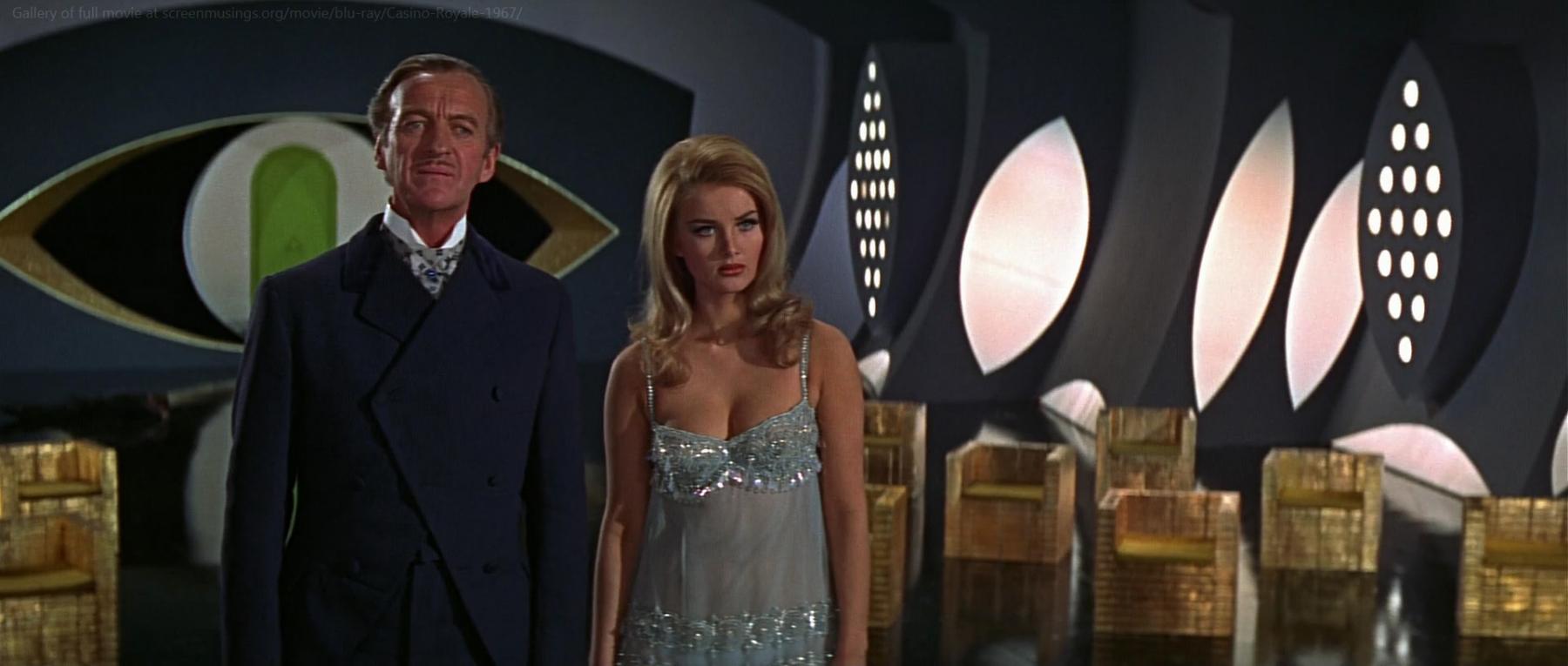60s villains: the actors' survival
For those who are fans of the James Bond series, you'll know that only two villains survived: Blofeld and Jaws.
This little tome is about the actors who played villains in Bond films of the 1960s, the ones they appeared in, and whether they are still with us. In short: this is about the longevity of those actors. Some actors disappear from consciousness; others remain embedded in our imaginations.
It has been a feature of Bond films that the actor chosen to play the villain is already well known. Other times the films come to define their career.
Take the first Bond Villain, Joseph Wiseman — still best known for Dr No. He started appearing in films in 1950, with his most notable early role in Detective Story, which starred Kirk Douglas. His film career never really took off, and he worked mainly in television up until 1996. I remember a TV film in the style of Enter the Dragon, which highlighted how he would have been a better choice for the lead villain than Shih Kien. He died in 2009 at the age of 91 (which means that if he were alive today, he would still be younger than Kirk Douglas).

Robert Shaw's film career only lasted 27 years due to his early death at the age of 51. His body of work was vast, varied and exciting — and included an Oscar nomination. He died in the autumn of 1978 with two films requiring completion. Although he had appeared in many films as minor characters, his three-dimensional portrayal of Red Grant was ruthless, fierce, and unflinching. His neuroses and feelings of inadequacies (the lack of knowledge regarding the right wine for dinner) made him memorable. He went on to star in a period of films where he shone like a beacon.

Now we reach the first of the true supervillains. Gert Fröbe played the gold-obsessed Auric Goldfinger in a charismatic and fascinating manner. Goldfinger was as ruthless with his colleagues as he was with the rest of the world.
Fröbe's acting career started in 1948 and continued until his death in 1988 from a heart attack. His heavy German accent meant that he had to be dubbed for Goldfinger, but it was so well done that it has never shown through. He then followed with some more English language films, playing comedy villains with a sense of ineptitude — yet his presence is enjoyable.

For Adolfo Celi, his career was dominated by films where his voice was hidden, the key exception being when he played Rodrigo Borgia for the BBC. His heavy accent both suited the part but also highlighted the dubbing actors used for his voice.
The actor who created his voice in Thunderball actually appeared on-screen in the remake: Never Say Never Again. His supervillain brought back elements where the mastermind (Blofeld) was seen controlling the crimes being planned around the world, in the manner of a modern-day chief executive — via hi-tech methods.
It was also the first Bond film to be shot in Panavision, so being the first to have some epic scope. His villain was ruthless and perverted but also gave a sheen of respectability. He died in 1986 at the surprisingly young age of 63 — although he always appeared to be much older in his films. Thunderball also deservedly won the Oscar for Best Visual Effect, with the award going to John Stears — who would next win the honour for his work on Star Wars.

When Blofeld first appeared on-screen in You Only Live Twice, the actor chosen was so effective in his portrayal that he achieved an Oscar nomination. Donald Pleasance brought a powerful sense of logic and menace to the role of the leader of SPECTRE, whose presence had been felt since Dr No. His iconic portrayal of the character highlighted complete ruthlessness and single-mindedness. Pleasance's Blofeld had no regard for those who worked for him, whom he considered utterly expendable.
For those who are younger than me, please note: this is not Dr Evil. Pleasance ended up with another lead role which helped define his career: the psychiatrist Dr Loomis, on the trail of Michael Myers in Halloween.
He died in 1988 at the age of 75.

When Telly Savalas played Blofeld in On Her Majesty's Secret Service, he brought charm, erudition, and persuasive power to the part. Savalas's Blofeld still had the cold ruthlessness of old, but with a demonstration of scientific knowledge and rigour. This time combined with a vanity and a desire to be thought of as a philanthropist.
The sequence at Piz Gloria remains one of the few in a Bond film where the location described in the book became the location for the film. As an actor, he started radio broadcasting while fighting in WWII. He never discussed what he did during that period, but flashes do appear in films such as The Battle of the Bulge and Kelly's Heroes. His performances in these films have a feeling of authenticity.
Savalas was as much known in his early career for directing plays. He made his first appearance on-screen at the age of 37. Savalas's first significant appearance was in the Birdman of Alcatraz (with hair). He only shaved his head to play Pontius Pilate and liked the look so much that he kept it. He had previously worked with Diana Rigg in The Assassination Bureau in 1968 playing the main villain — with charm and threat in equal measures.
The part he was planning to play but never got the chance to is Basil Zaharof. This character is considered the inspiration for both James Bond and Blofeld: a real-life "man of mystery". Savalas died the day after his 72nd birthday.

We have come to the end of the 1960s — but have we? There is one film I have not covered. Technically, it is not part of the official Bond series, but when this film came out, it had a budget three times that of the "proper" Bond films. It contained great music and some compelling performances. The actor chosen to play James Bond was one of the few actors who trained in real life to undertake such missions: David Niven. He gained these skills after starting his Hollywood career. The film is Casino Royale.
This film had six directors: Joe McGrath, John Huston (who also appeared as a red-wigged M), Val Guest, Robert Parish, Ken Hughes, and Richard Talmage. With so many directors, it would have been challenging to maintain a single tone. Casino Royale's budget spiralled out of control.
The villains of Casino Royale tie in with the longevity aspect; the actor who played the lead villain in the film was not Orson Welles. Welles played Le Chiffre — who was the main villain in Ian Fleming's original story. The directors went for a different take. This actor is still acting, directing, winning Oscars and creating Oscar nominating performances for other actors. He is still courting controversy too. The actor is Woody Allen — the longest surviving Bond villain.
Woody Allen started as a writer for Sid Ceasar on television, along with Mel Brooks. His first film script to be produced was What's New Pussycat? with Peter Sellers and Peter O'Toole — directed by Jo McGrath. Allen's character in Casino Royale was James Bond's nephew, who ends up killing all the protagonists — including Bond and himself.
The film is surreal and lunatic in its complexity. The jokes were thrown in with actors turning up for one line (e.g. William Holden). We also heard the first swear word in a Bond film: Jean-Paul Belmondo hitting someone and then saying "merde!"
Woody Allen's son, Ronan Farrow, was the man who brought down one of the most influential producers in Hollywood: Harvey Weinstein. Allen remains one of the most respected filmmakers. He still uses his idiosyncratic ways to film, can attract top talent, and make profitable films with small budgets.
In the 1970s, only two directors could effectively green-light their projects: Clint Eastwood and Woody Allen. Even now, these two are still able to produce the films they want to make.






